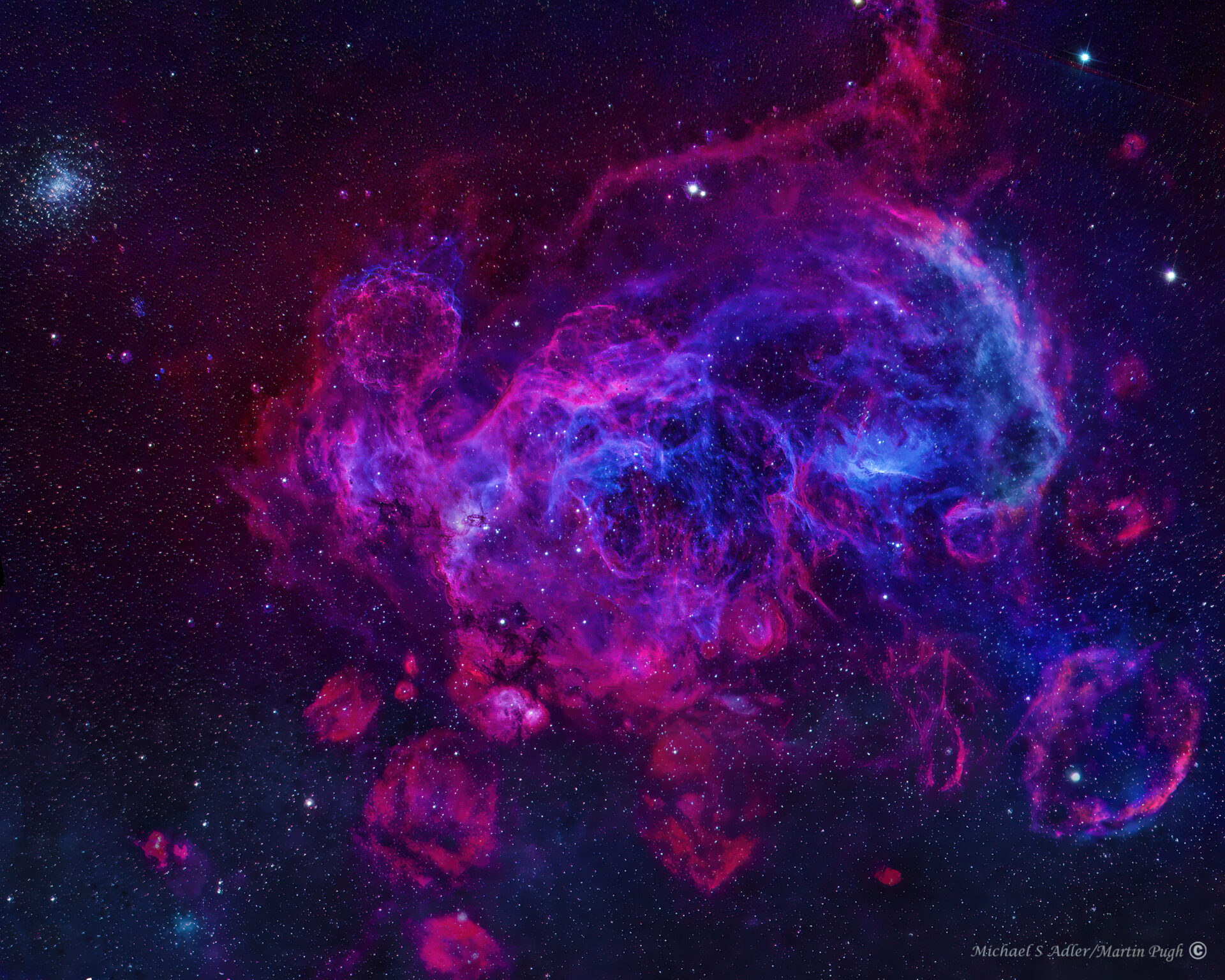Optics: Planewave 24″ CDK24, RH305
Mount: Software Bisque Paramount ME
Camera: Movarian C3-61000, ZWO ASI6200
Filters: Astrodon 3nm Ha, Oiii, RGB
Dates/Times: Feb 2023, Dec 2023
Location: Rio Hurtado, El Sauce, Chile Martin Pugh Observatory
Exposure Details: CDK24,Ha,Oiii=17x15min, R,G,B =6x3min,RH305,Ha,Oiii=12x20min total 76 images, 15 hours
Acquisition: MaxIm DL
Processing: MaxIm DL for calibration, stacking,and color combining with NB in Ha Red, Oiii in Blue, StarX Terminator; Photoshop CC2022 for combining HaOiii image with RGB stars
N 206 Super Bubble, CDK24, RH305
Original price was: $65.00.$52.50Current price is: $52.50.
Super Bubble, N 206 Massive stars severely influence their environment by their strong ionizing radiation and by the momentum and kinetic energy output provided by their stellar winds and supernovae. Quantitative analyses of massive stars are used to understand how their feedback creates and shapes large scale structures of the interstellar medium. The giant Hydrogen II region N 206 is in the Large Magellanic Cloud that is 170,ooo light years distant and is a satellite galaxy gravitationaly bound to the Milky Way. It is located in the deep southern sky at 70 degrees below the equator. It contains an association of hot massive blue stars known as OB stars and super nova remnants that powers a superbubble filled with hot X-ray emitting gas. The circular region to the upper left is a super nova remnant, the bright region in the upper left is NGC 2018, a young star cluster, and in the very center of the image is the Xray super bubble. Like other giant stars, OB stars are short lived, and do not move far from where they were formed. During their lifetime, they emit huge amounts of ultraviolet radiation. This radiation ionizes the surrounding interstellar gas of the nebula, forming an H II region where new stars are being formed. This image is made using narrowband 3nm filters that capture emissions from Hydrogen and Oxygen gases. These emissions are created because of ultraviolet light from these massive OB stars excite the Hydrogen and Oxygen gases which then re radiate light at their characteristic wavelengths. The Red color comes from Hydrogen emission at 656.5nm and the Blue from Oxygen emission at 500.7nm While technically a false color image as only light from these very narrow filters are used in the image, the colors are close to the actual colors . The image was taken with a 24″ Planewave telescope located in Rio Hurtado, Chile and a RH305 in Australia.


